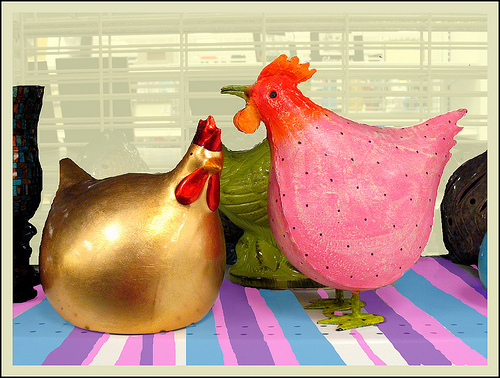Chicken: If it's dry, you're doing it wrong

I didn't really care about "plumping" until I got a slow cooker. Time after time, when I cooked a dish with chicken in the slow cooker, it ended up filled with water. I would put in (say) a pound of boneless skinless chicken breast and a jar of spaghetti sauce, and four hours later it would look like I had dumped in a cup of water too.
I had heard of the industrial practice of injecting chicken with saltwater. But I didn't make the connection at first. I was stumped as to where all this water was coming from… until I realized that it was coming from inside the chicken meat itself. Which by the way was still perfectly tender and delicious, even after having shed all that water.
It got to the point where, every time I did chicken in the slow cooker, I would build in an hour at the end to take the lid off, turn the temp up to high, and simmer off all the extra water. Crazy!
The manufacturers claim that the extra fluid in their chicken is meant to combat charges that chicken is "too dry." If you are concerned about your chicken turning out dry, you're probably overcooking it. That's a natural impulse, given all the food safety issues with raw chicken. I wholeheartedly recommend getting a digital meat thermometer with a remote probe, the kind that dangles out of your oven door while the dish cooks.
Properly cooking your meat to the correct temperature makes a world of difference to the end result. After I bought a good meat thermometer (mine has a temperature alert that beeps when the meat is up to temp) I was dismayed to realize that I had been horribly overcooking poultry my entire life.
At 165 degrees with a 10-minute rest, chicken breasts turn out tender and juicy, not dry and fibrous the way they used to. I was probably cooking them to 180 or higher, just out of fear.
Image courtesy Flickr/dog.happy.art

0 comments